- JAPANESE
- LANGUAGE
X
 THAT IS GOOD
THAT IS GOOD
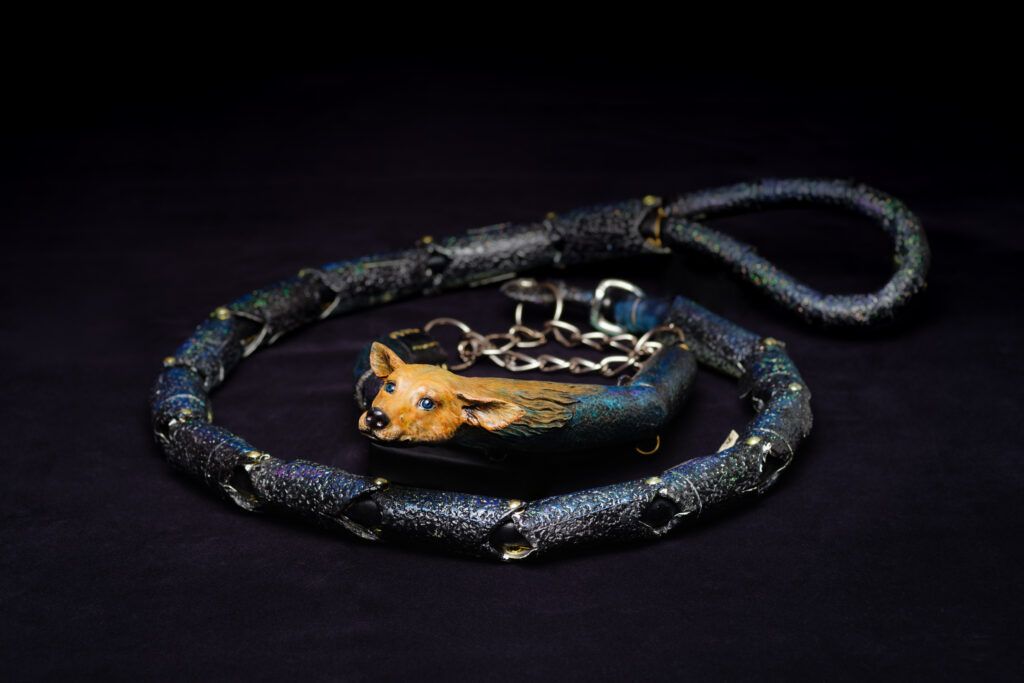
Materials: lead, acrylic pipe, epoxy, sculpey, wallpaper, insect pins, pigeonholes
Since the venue of my solo exhibition is Hamamatsu, I decided to use the famous eel as the motif. Speaking of eels, I thought of “Unagi Inu”, but the visual of eels is too plain (there is no other famous character other than “Unagi Inu”), and the long and thin body and color are not photogenic (the chunky shape looks better. Also, black is hard to convey a sense of three-dimensionality). It’s hard to go beyond that.
Eel dog, dog of eel, eel, dog, dog, eel, eel dog. That’s it!
So, I decided to use my dog “Chako-chan’s” leash as an eel, and came up with the idea of making her face a dog and her body an eel.
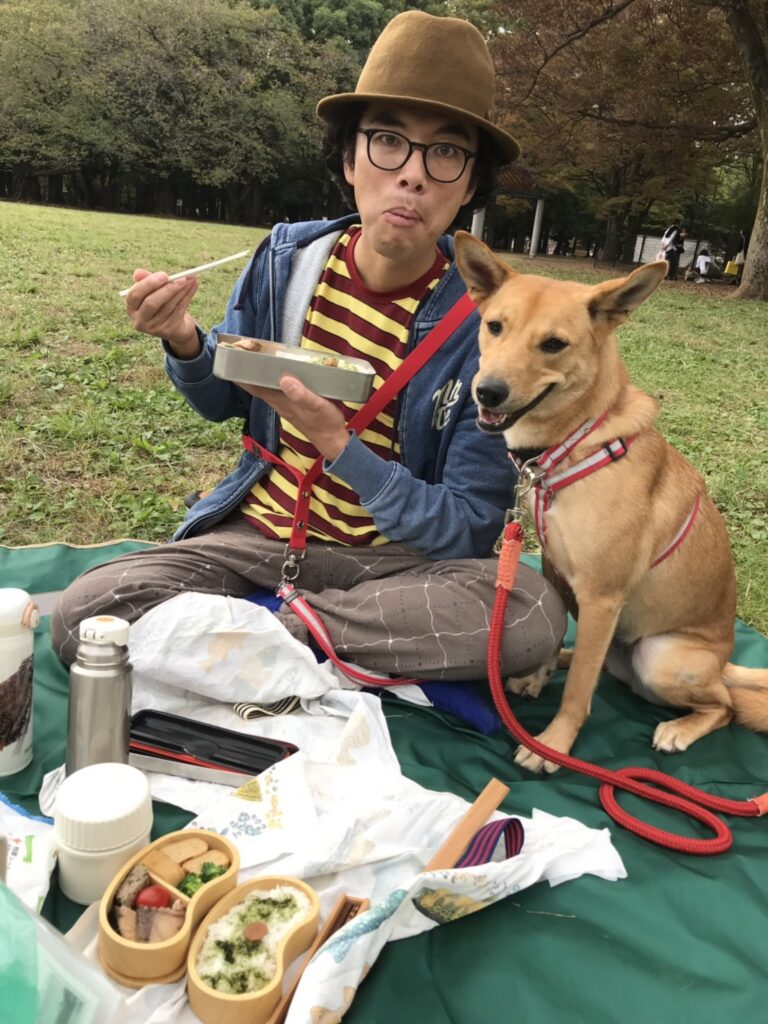
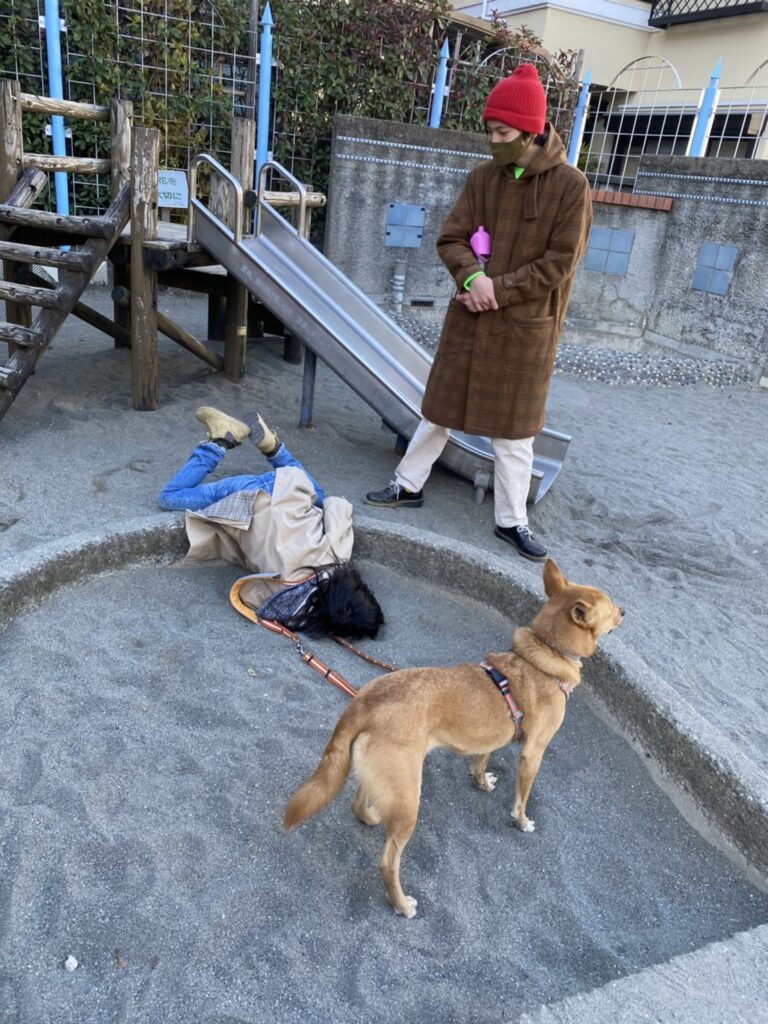
At the time, Chako-chan had been with us for six months, and it was easy to sculpt her because she would sit still (she’s still very quiet). She is a macho dog, so her facial muscles are clearly defined…. I also had to figure out how to use the soft rope material. I used a commercial lead with a PVC pipe to make the joints, and attached textured wallpaper tape to finish it. I was also unsure about the color, but I chose Chako-chan’s color for the face and an eel-like color for the body.
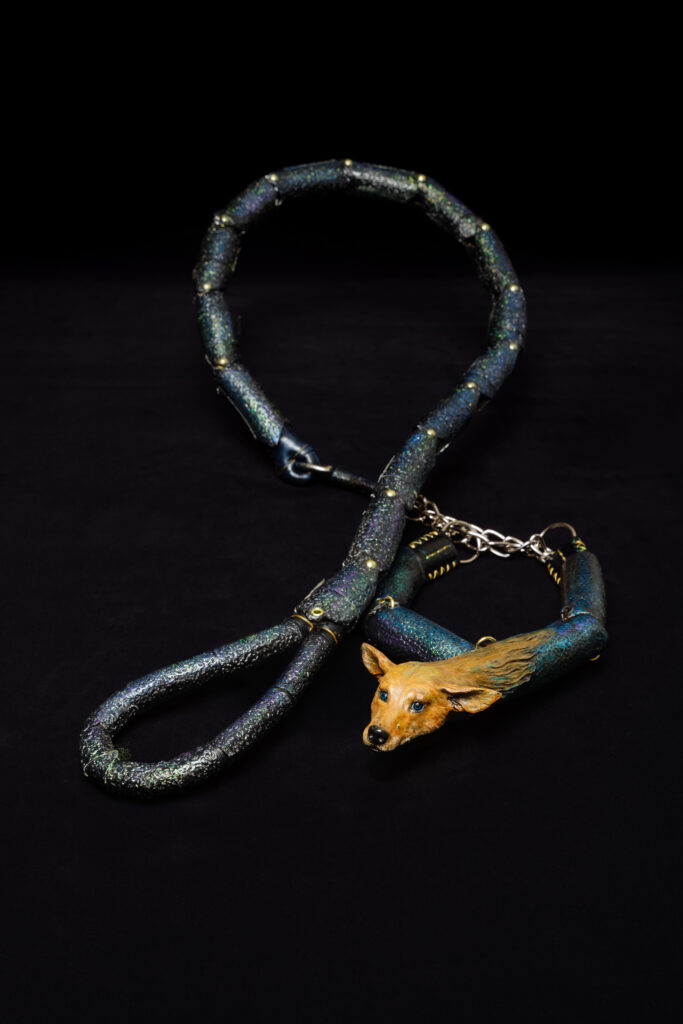
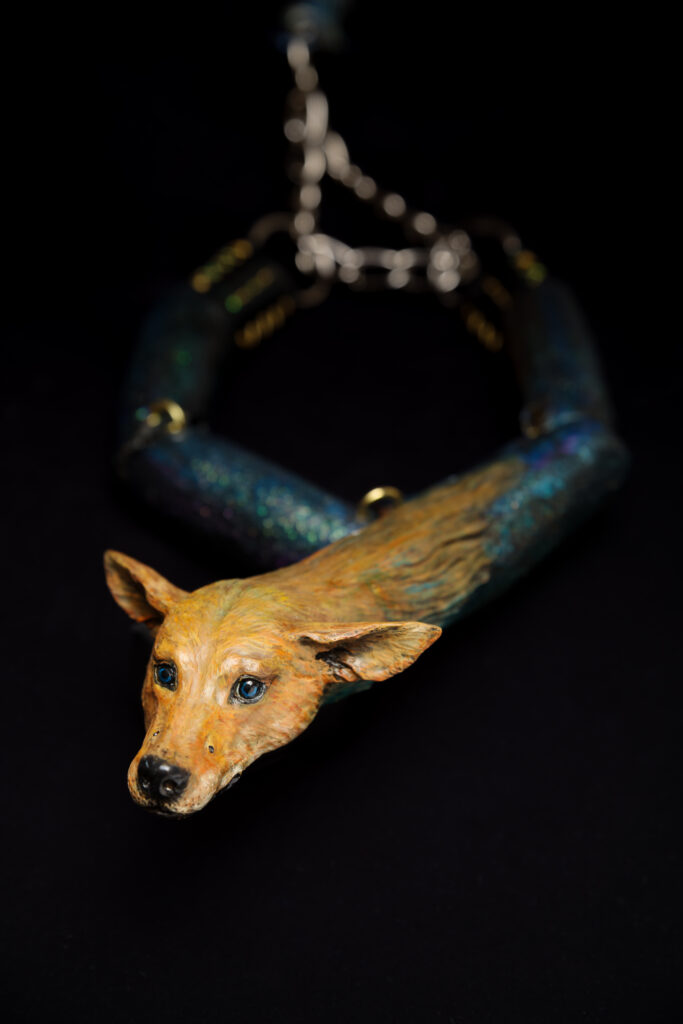
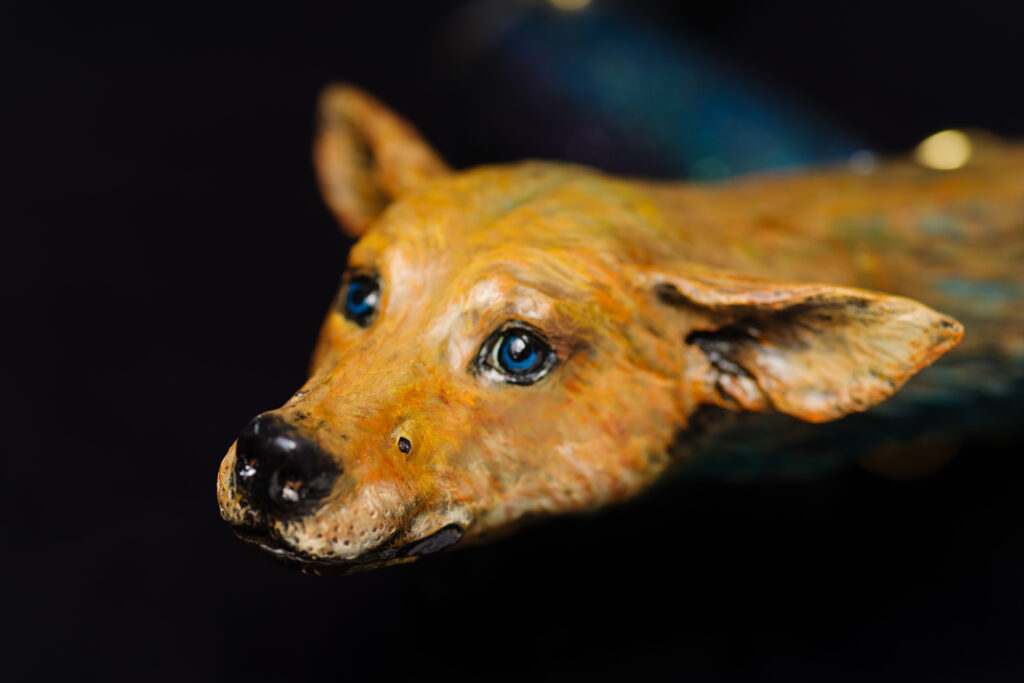
The face looks completely like a dog, but it’s actually an eel, the parts that look like ears are fins, the parts that look like eyes are mimics, and the real eyes are the small parts next to the nose (using a 1mm steel ball).
After it was completed, I tried it on Chako-chan, but she was really scared. I wonder what it would be like to wear it now? At that time, Chako-chan was still very thin. She weighed 16 kilos then. Now she weighs 19 kg.
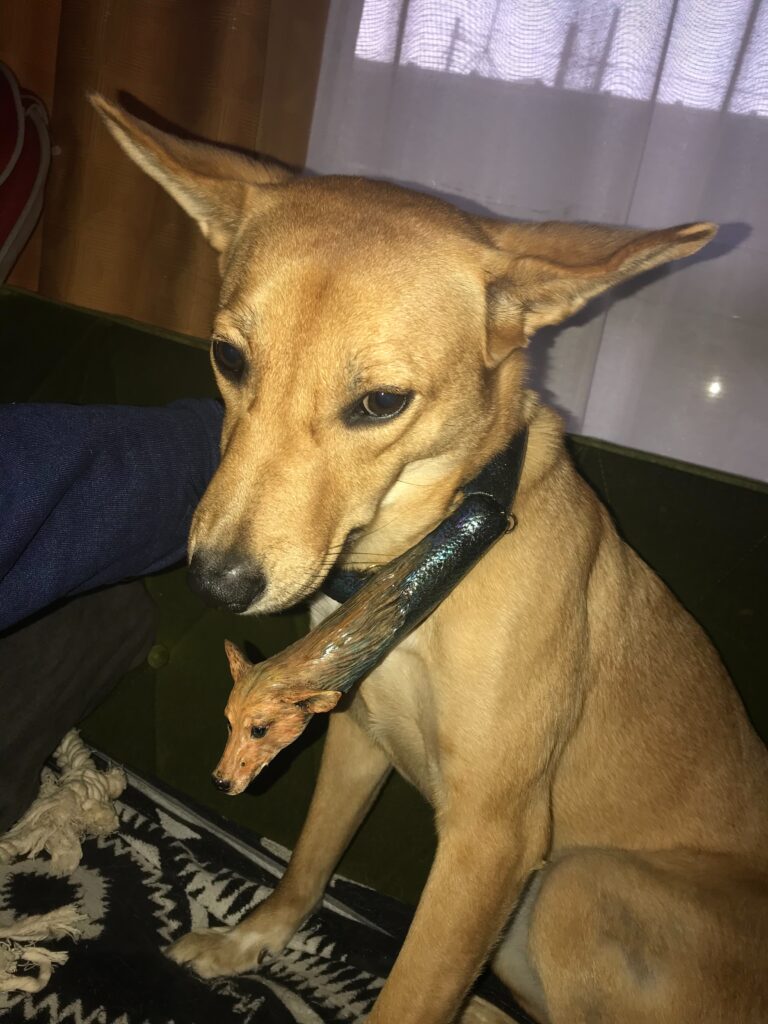
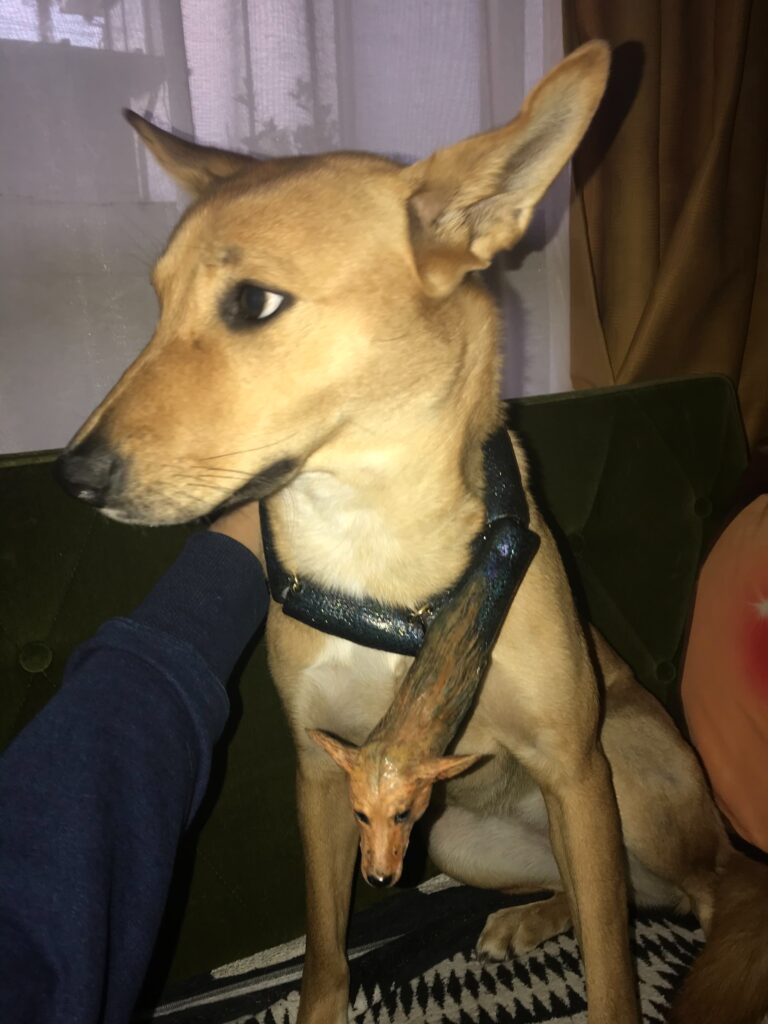
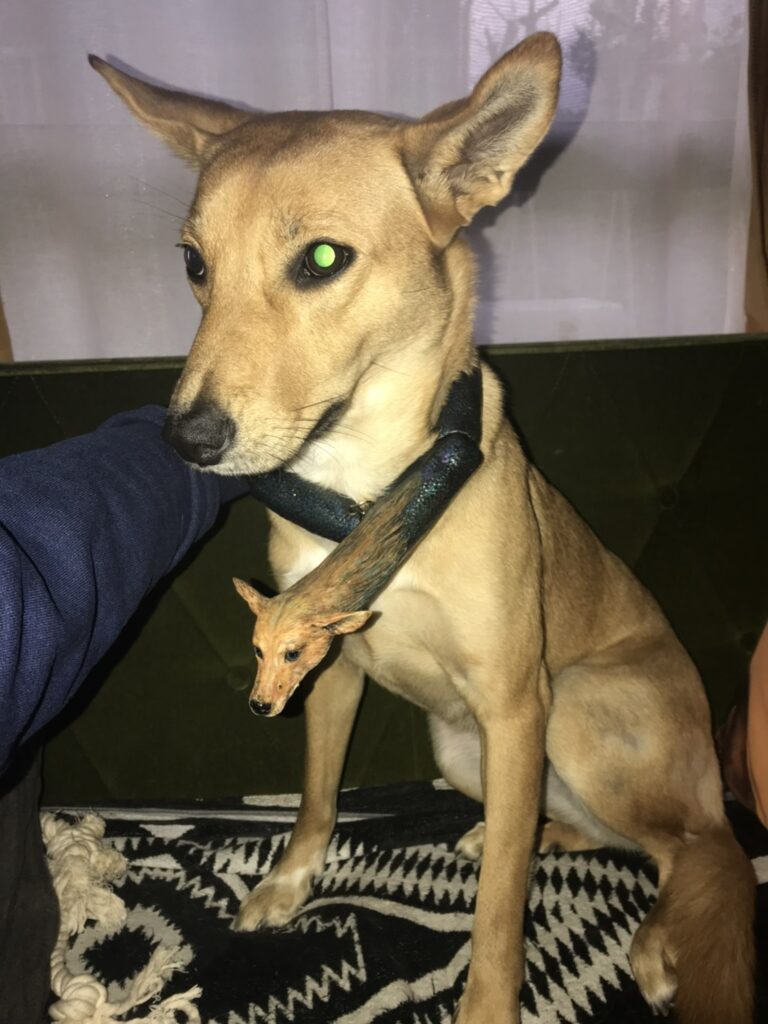
↑After staying up all night to complete the work, I put on my dog eel early in the morning to take these photos (2018).
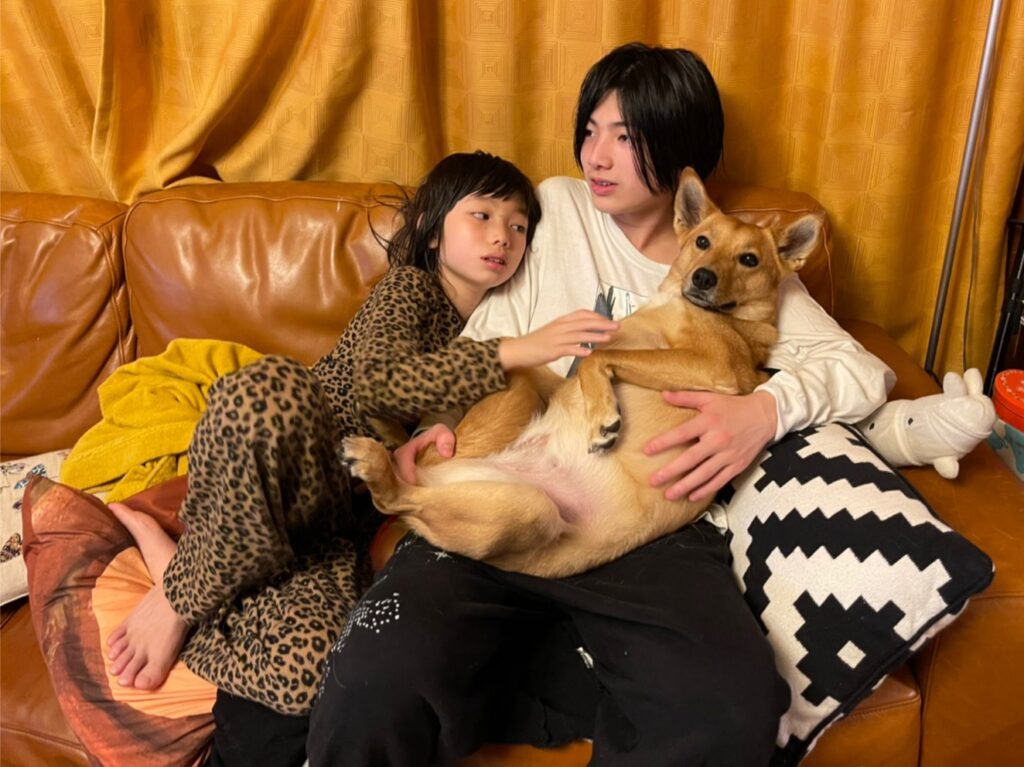
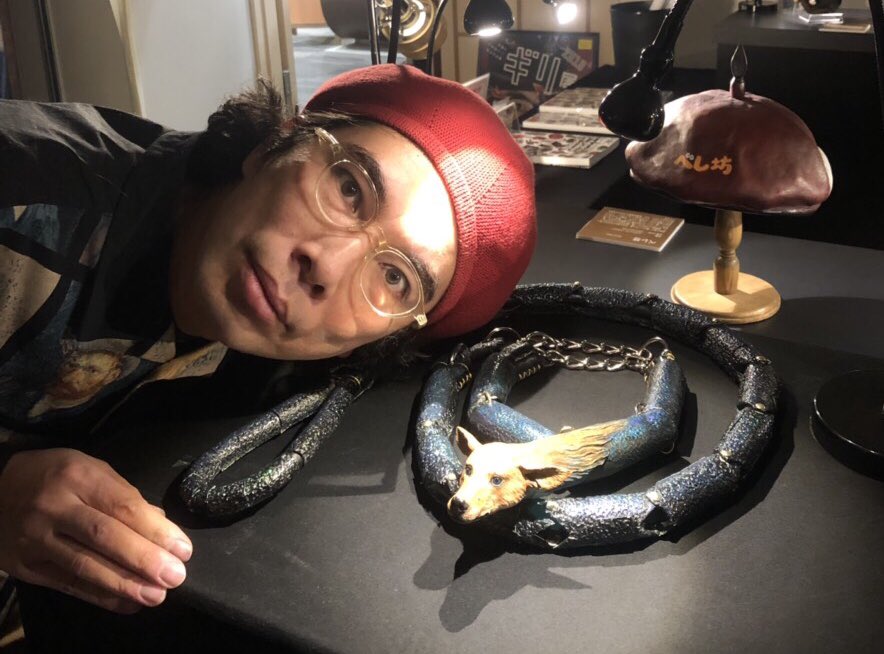
Photos of the works : Yoshiaki Hirokawa
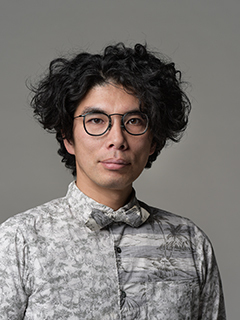
Jin Katagiri
Born November 27, 1973 / Born in Saitama Prefecture / Graduated from Tama Art University
Active in the stage, movies, radio, etc., mainly in TV dramas series. Major appearances in recent years include “99.9% -Criminal Lawyer-” (TBS), “Your Turn to Kill” (NTV), and “NHK Morning drama series Yell” (NHK).
In addition to acting, he also creates clay, and from 2016 to 2018 he held a national tour at the “Jin Katagiri Absurdity Clay Art Exhibit Giri Ten.” In 2019, he is holding his first overseas solo exhibition in Taiwan.
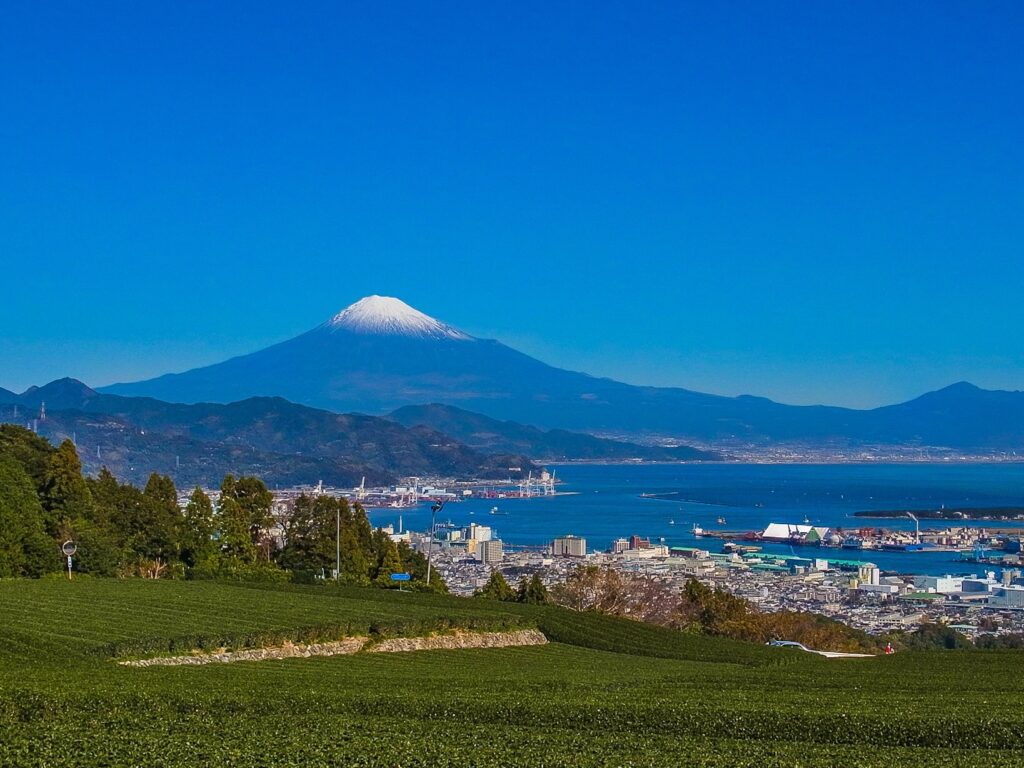
Shizuoka Prefecture is located on the Pacific coast of central Honshu. Fuji, the highest mountain in Japan at 3,776 meters above sea level, which was registered as a World Heritage Site in 2013. In addition to Mt. Fuji, Shizuoka Prefecture ranks first in Japan in various other areas such as tea production, tuna and bonito catch volume, piano shipment value, and plastic model shipment value. Suruga Bay, the pride of Shizuoka, is 2,500 meters deep and is said to be the deepest bay in Japan. Thanks to various factors, such as the steep topography of the 2,500-meter slope of the ocean floor and the flow of melt water from Mt. Fuji, Suruga Bay is a very rich sea that is home to a large number of fish.
Across Suruga Bay to the east is the Izu Peninsula, home to many fishing ports, hot springs, and beaches. To the west is the city of Hamamatsu, home to one of Japan’s largest fishing ports, Yaizu Port, the tea plantations of Makinohara Land, and Lake Hamana, known for its eel farming.
Hamamatsu City is developing into a “manufacturing city” based on the “Yaramaika Spirit,” a spirit that encourages people to “boldly take on any challenge” and “try everything first.
The city is also surrounded by a wide variety of nature, including oceans, lakes, mountains, and rivers, and is home to Hamamatsu Castle, which is associated with Ieyasu Tokugawa, making it a city full of attractions.
*Yaramaika spirit: the entrepreneurial spirit unique to the Hamamatsu region.
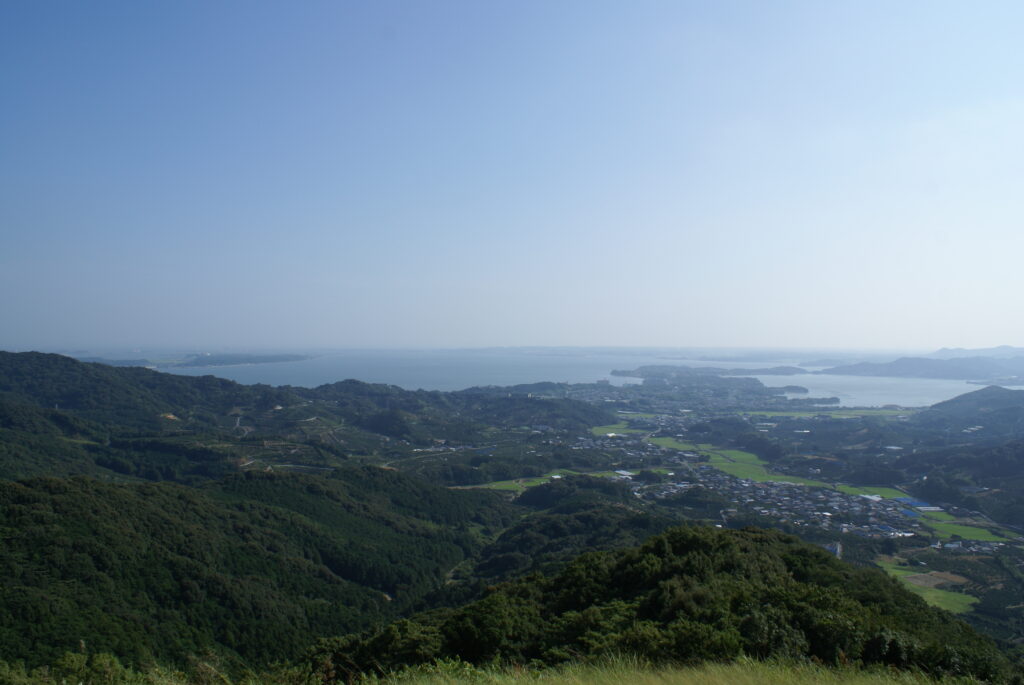
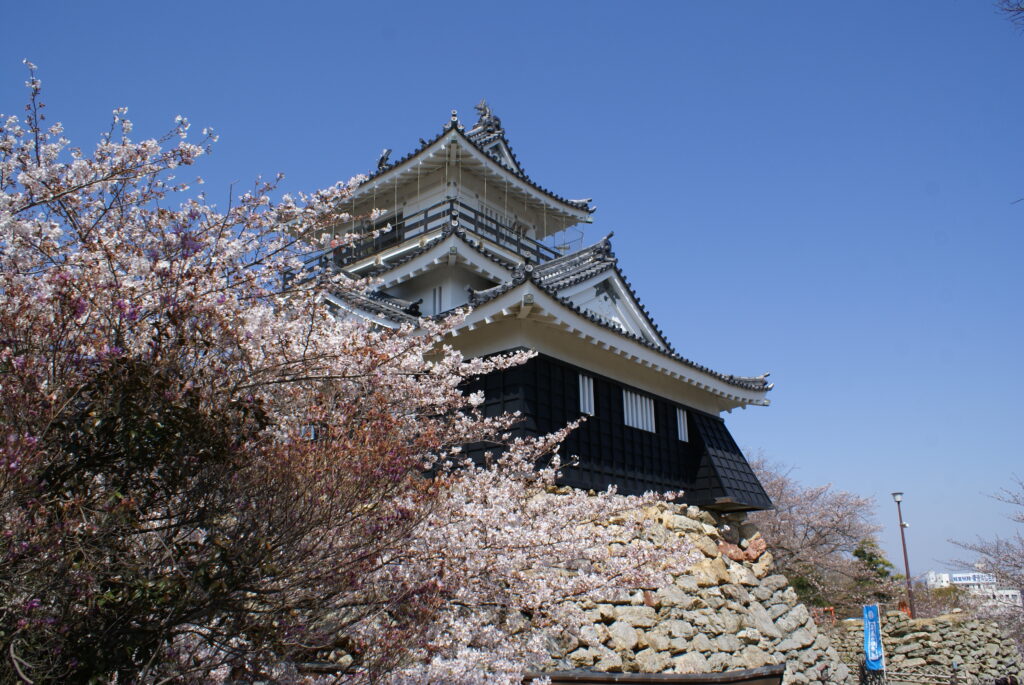
Originally, it was a freshwater lake bordered by sandbars, but in 1498, the Ming earthquake and high tides caused the sandbars to collapse, creating a brackish lake that connected to the open sea. Brackish lakes are extremely rich in fish and other living organisms because of the concentration of nutrients from seawater and freshwater. Like natural organisms, it is also suitable for growing eels, seaweed, oysters, and soft-shelled turtles, so the aquaculture industry is thriving. It is also a tourist spot where you can enjoy a variety of activities, and cycling around Lake Hamana, which is the second longest lake in Japan with a circumference of 128 km, is particularly popular.
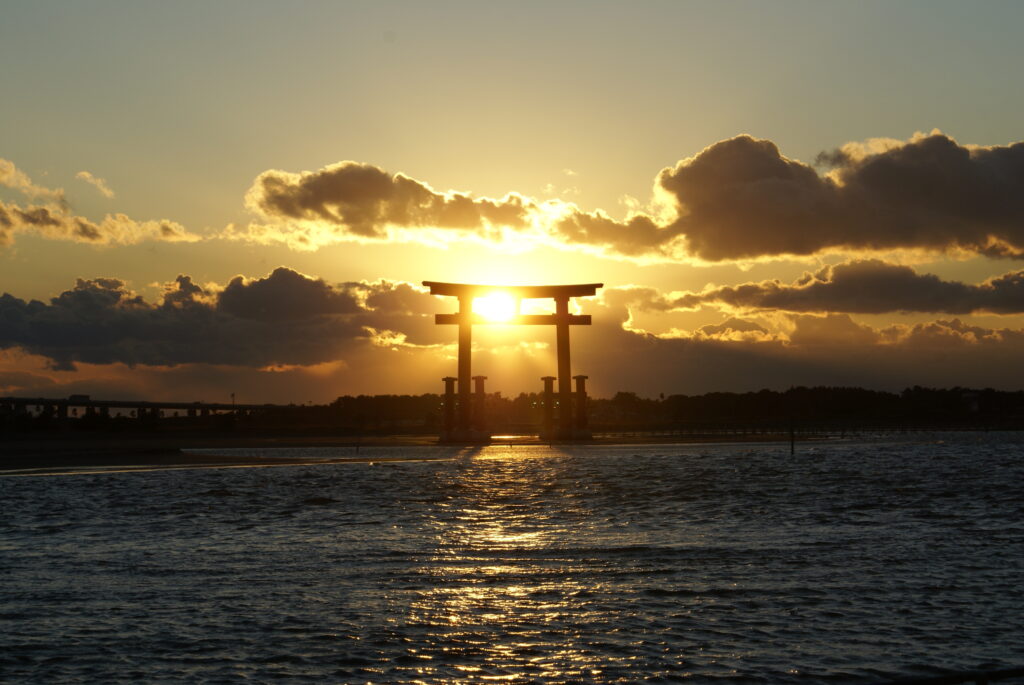
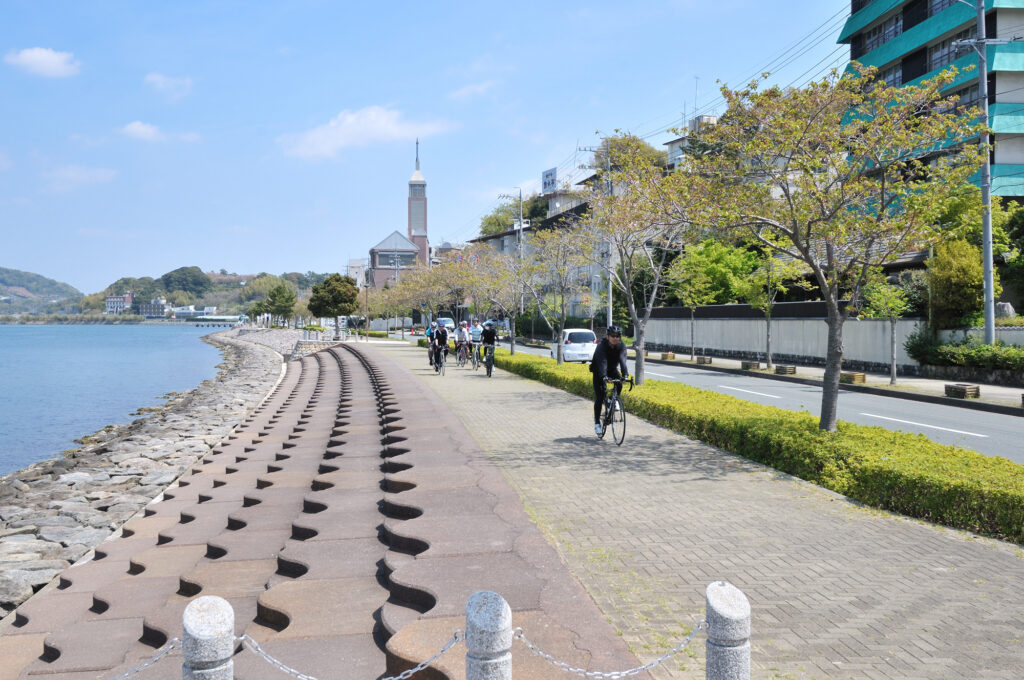
Over 100 years ago, Mr. Kuraharu Hattori, who had been conducting research on eel farming in Tokyo, saw Lake Hamana from a train traveling to Aichi Prefecture and thought, “This is the best place for eel farming. I’m sure we can farm eels here.” He immediately got off the train to investigate the surrounding areas of Lake Hamana and became convinced that this area was the best place for eel farming. He then built Japan’s first full-scale eel farming pond in Hamamatsu and succeeded. Following the success of this project, more and more people came to work on eel farming, and Lake Hamana became famous for eel farming nationwide.
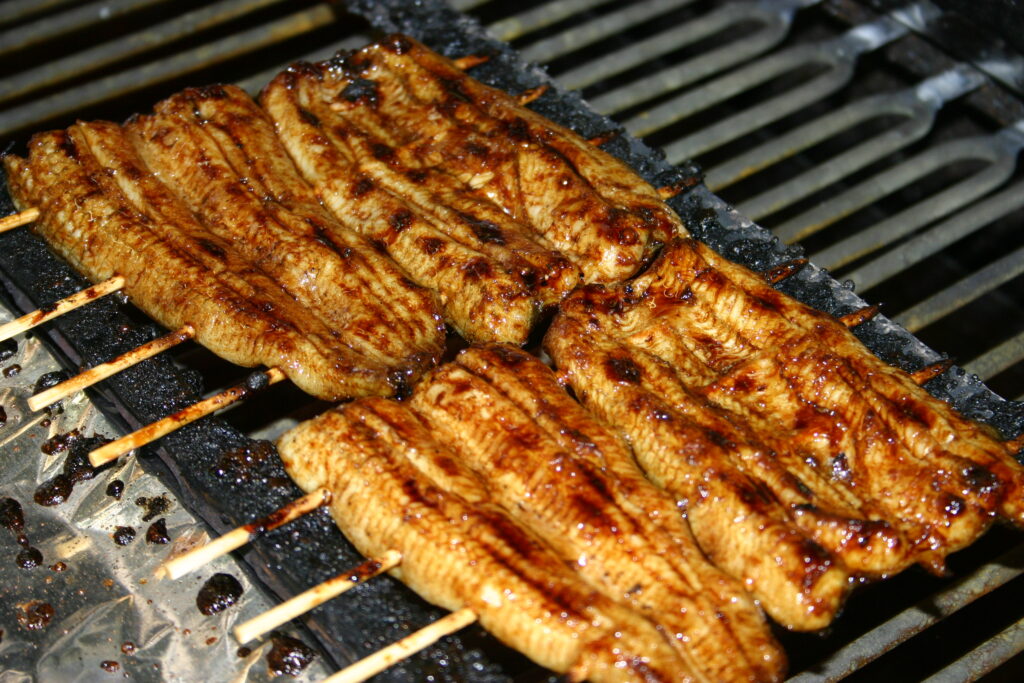
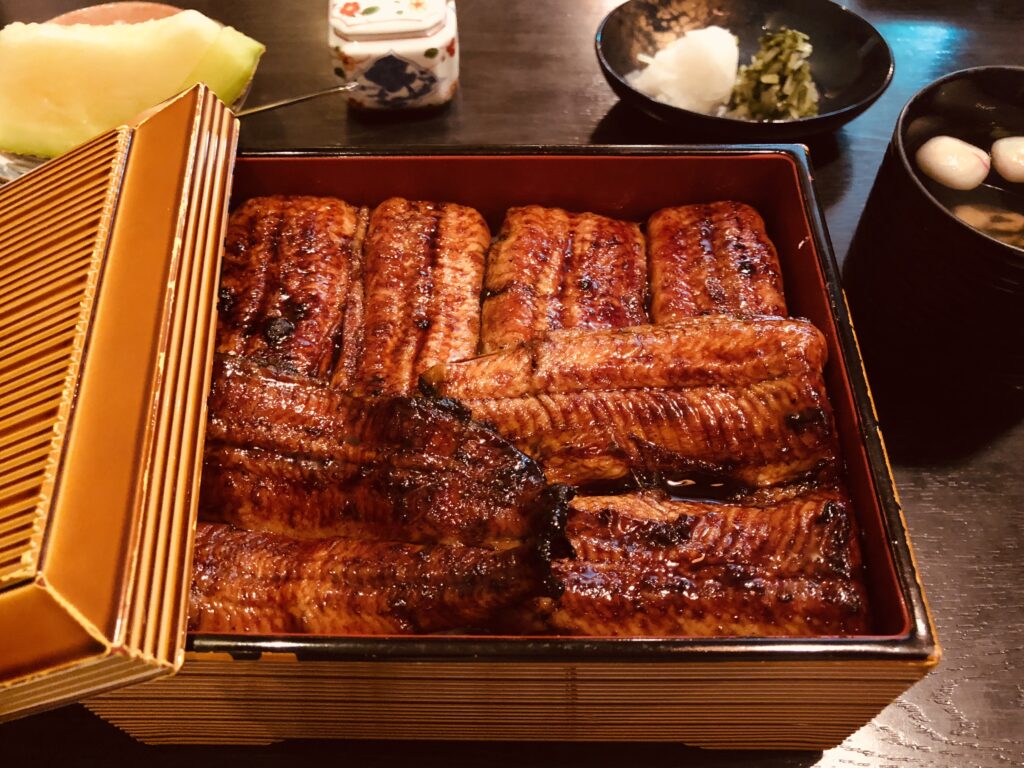
In Japan, eel bones have been unearthed from shell mounds dating back to the Jomon period, about 5,000 years ago. It is said that eel has been a familiar food for Japanese people since ancient times. Nowadays, eels are generally eaten as “kabayaki,” which means they are opened and dipped in a thick sauce made of soy sauce, mirin, sugar, etc. This way of eating eels seems to have been adopted after the Edo Genroku period (1688-1704). Since that time, the East and West of Japan had different cultures. As a result, the way of opening eels differed between East and West.
In the Kanto region, the eel is opened from the back, while in the Kansai region, it is usually opened from the belly. There are various theories as to why this is so, but it is said that during the Edo period (1603-1868), Kanto was a samurai society with many samurai, so opening the eel from the belly, which is associated with “seppuku,” was considered bad luck, and the back opening became the mainstream. On the other hand, in the Kansai region, where the culture was that of merchants, it is said that the belly-breaking method was preferred because it meant “Talk with the belly breaking (it means heart-to-heart talk)”. It is said that the borderline between Kanto and Kansai is around Hamamatsu City, and you can enjoy both ways of cooking in Hamamatsu.
Photo credit : Hamamatsu & Lake Hamana Tourism Bureau
References : Hamamatsu City official HP (city.hamamatsu.shizuoka.jp)
Richard Schweid Consider the Eel (Nikkei Business Publications, Inc. 2005)
In Hamamatsu, “Hamamatsu Gyoza” is popular as a local gourmet food as well as “Unagi (eels)”. It is said that the history of yaki-gyoza in Japan is almost the same as in other regions, and that it was started by demobilized soldiers from China as a business after the war (1945), but Hamamatsu gyoza has an even older history. During the Taisho era and before the war (around 1912 to 1930), there were many Chinese people in Hamamatsu City. It is known that the Chinese restaurants that they ran were serving yaki-gyoza from that time. After the war, the people who worked at the restaurant inherited the taste of the gyoza and made it into the present “Hamamatsu Gyoza”.
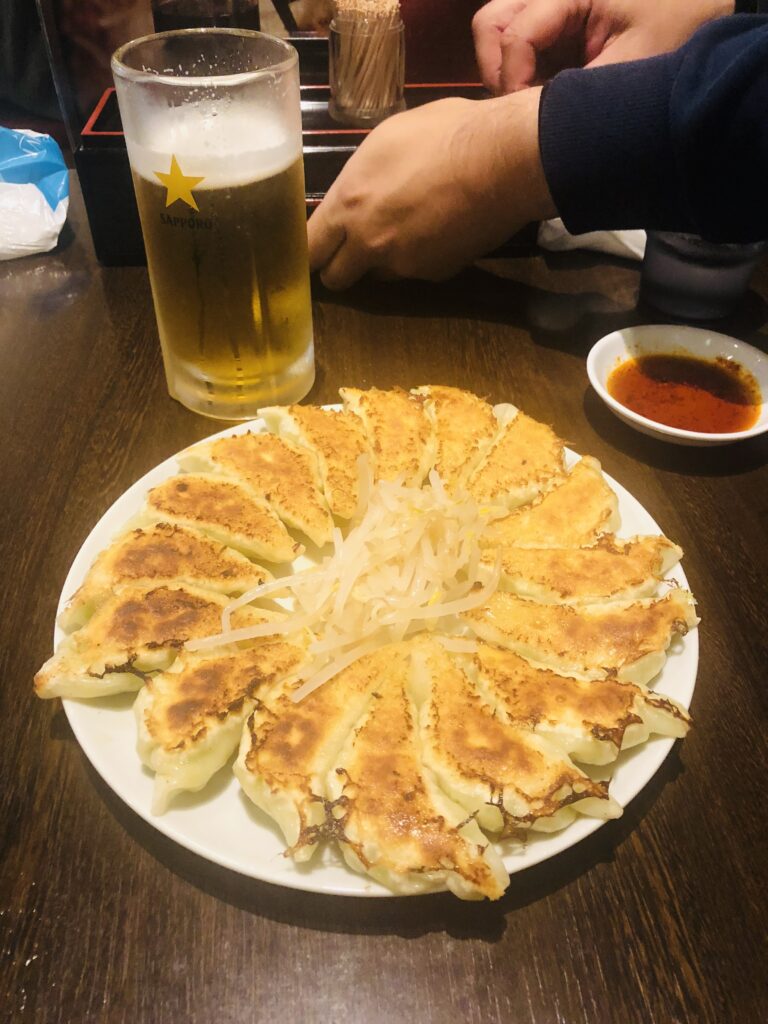
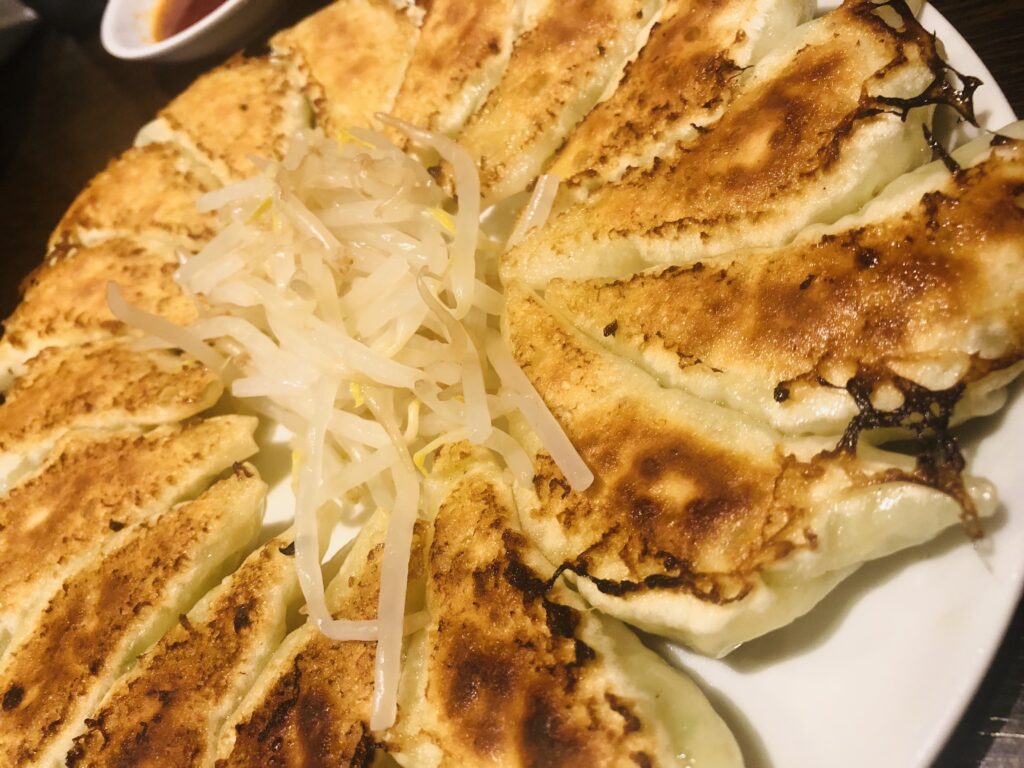
The round shape of the dumpling and the bean sprouts in the middle. This is one of the characteristics of Hamamatsu gyoza. In the days when many yaki-gyoza shops sold their gyoza at food stands, they couldn’t cook a large quantity of gyoza on a griddle, so they cooked them in a frying pan. In order to bake a large number of gyoza at one time, they came up with the idea of baking them in a circular layout. Hamamatsu gyoza, with its light taste of cabbage and richness of pork, could be eaten by a single person, so a whole plate baked in a circle became a product for one person. When baked in a circle, a hole appears in the middle. The hole bothered them, so they decided to use bean sprouts as a garnish for sashimi. The fresh bean sprouts are perfect as a chopstick rest.
Photo credit : Hamamatsu & Lake Hamana Tourism Bureau
References : Hamamatsu Chamber of Commerce and Industry 「Welcome Hamamatsu Gyoza」
Hamamatsu Gyoza Special Site | Hamamatsu Chamber of Commerce and Industry Hamamatsu Gyoza PR Project to the World (hamamatsu-gyoza.jp)
One of the fun parts of the Giri Exhibition national tour was the local gourmet food.You can eat local gourmet food from all over Japan while you are in Tokyo, but nothing compares to the taste of local food. At the Giri Exhibition held at AEON Mall Hamamatsu Shidoro in 2018, I enjoyed the “unagi” and “Hamamatsu gyoza” that I introduced here. They were delicious! It was a local specialty that I wanted to try again, so I decided to introduce it here. I’m drooling even as I write this article.
Text : THAT IS GOOD editorial department, Fujita
